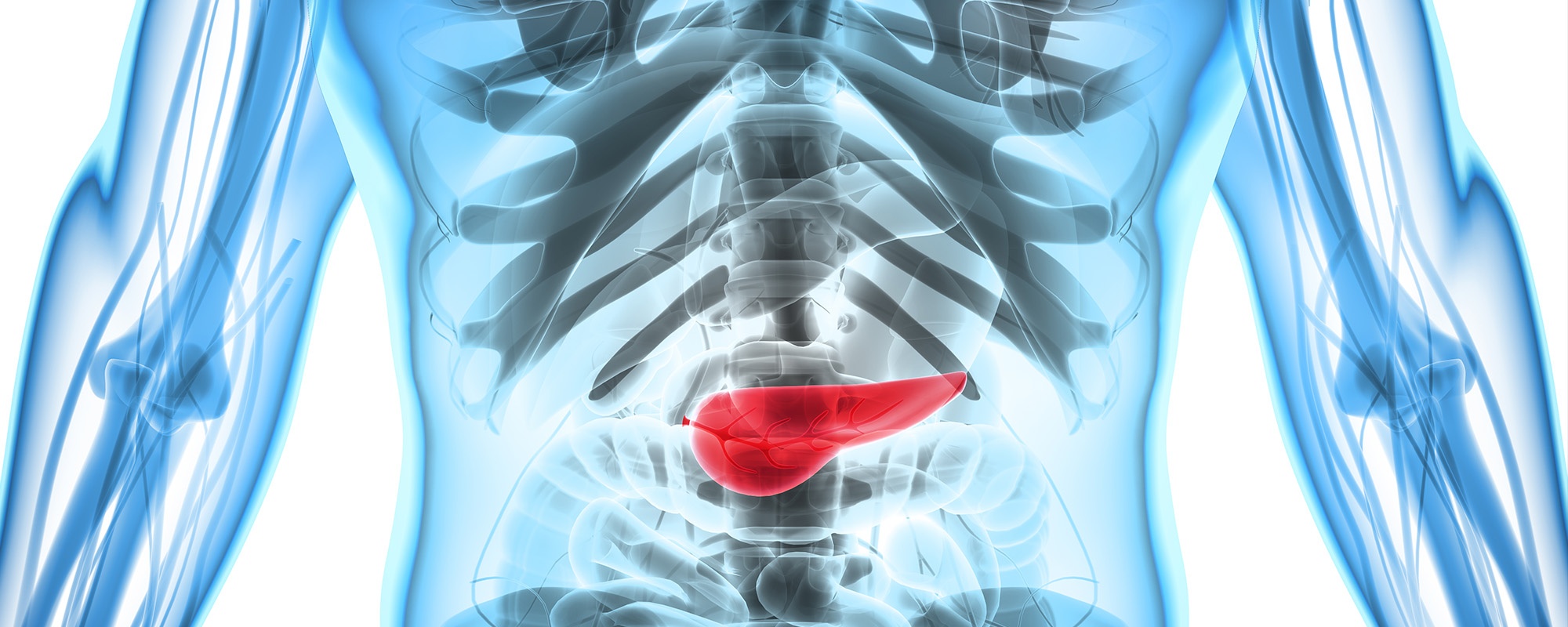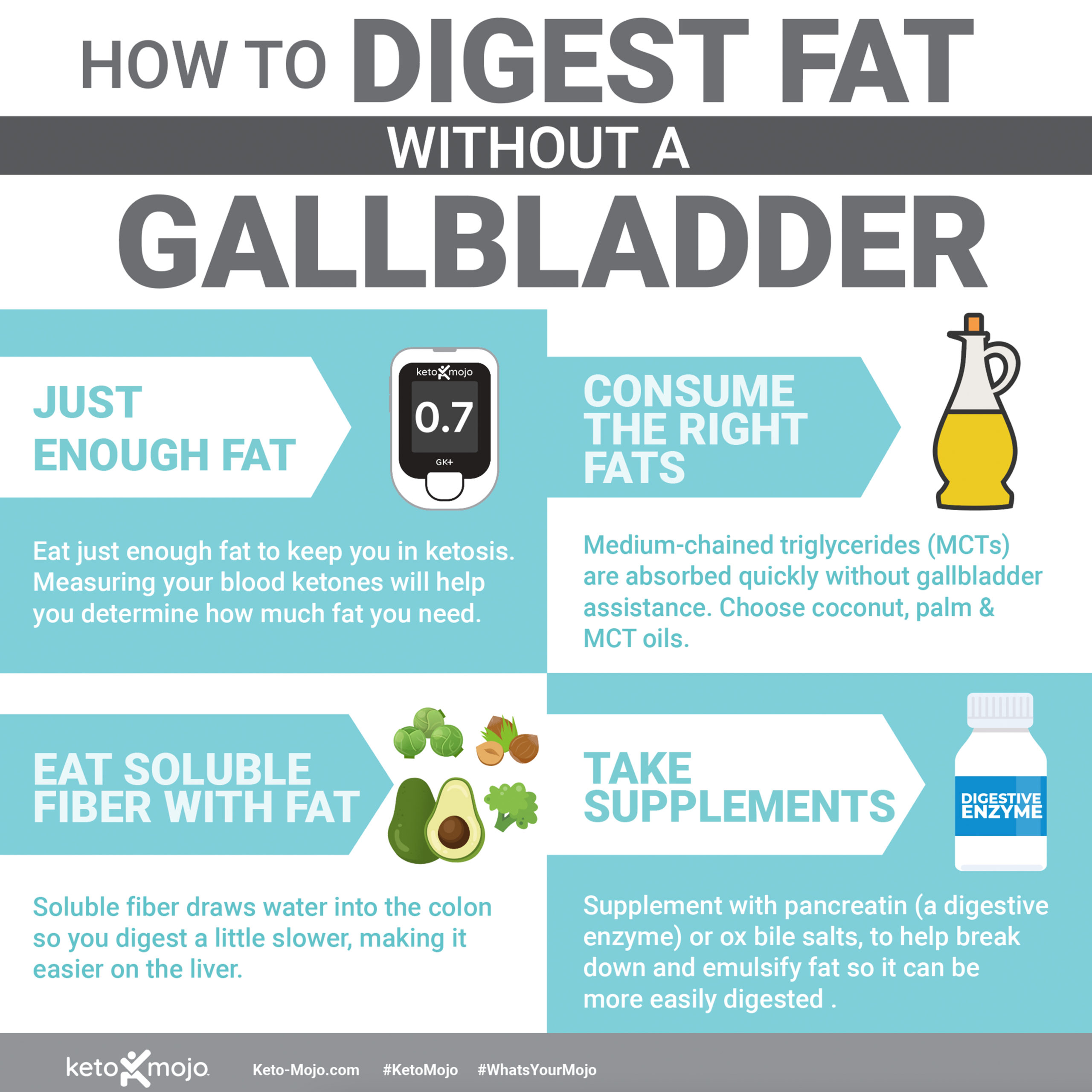The keto diet is a low-carb, moderate-protein, high-fat diet that many people follow for weight loss and therapeutic reasons as well as increased energy, reduced blood sugar, and other health benefits. But what happens if you don’t have a gallbladder? Can you still do the keto diet after gallbladder removal?
This is a common question, given the higher fat content of the keto diet and the general recommendation of a low-fat diet for people who’ve had their gallbladder removed. Still, the answer is yes, you can follow a keto diet after you’ve recovered from a gallbladder removal surgery. But there are some important steps you’ll need to take to ensure you do it happily and healthily.
What’s the Purpose of Your Gallbladder?
The gallbladder is a small sac located just beneath the liver. Its primary function is to store bile (a green fluid that helps with fat digestion) and assist with fat digestion. The gallbladder doesn’t produce bile. The liver produces it; the gallbladder just stores it. Gallbladder surgery (a.k.a gallbladder removal or a cholecystectomy), is sometimes medically recommended when gallstones are present and causing abdominal pain and cramping.
What Happens When You Don’t Have a Gallbladder and You Eat Fat?
Immediately following a cholecystectomy, you need to eat carefully to help your body adjust to operating without a gallbladder. Clear liquids are great, as are some solid foods, especially healthy low-fat foods.
Once your body acclimates, you’ll be able to add more diversity, including more fat. However, since there’s no stored bile in your body, you may experience diarrhea and discomfort. Consequently, some doctors recommend you continue to mitigate side effects by eating a low-fat diet consisting of many small meals featuring lean protein, whole grains, and vegetables. Spicy foods may be best avoided until bowel movements normalize; even then they may not work for you.
Even long after recovery, without a gallbladder, bile is not immediately available when you eat fatty foods (think fried foods, some red meats, and dairy products, especially high-fat dairy like ice cream, etcetera), so the liver has to work harder to produce more bile. This means anyone without a gallbladder relies on their liver to ramp up every time they consume fats.
Since a keto diet is higher in healthy fats, it’s important that you pace your high-fat foods intake if you’re eating keto and don’t have a gallbladder. Otherwise, you can consume too much fat too quickly and the liver may struggle to produce enough bile. This is not immediately life-threatening, but it can result in unpleasant side effects, such as diarrhea or gastrointestinal distress (cramps, gas, bloating, and more). Plus, because you aren’t fully digesting the fats you’re eating, you might not get enough nutrients. Thus, you’ll want to take extra steps to ensure you can both digest fats and get the nutrients from the daily grams of fats you consume while enjoying a keto lifestyle without a gallbladder.
How to Digest Fat on a Keto Diet Without a Gallbladder
Managing fats on a keto diet without a gallbladder isn’t hard. It just requires thoughtful eating and heeding the following simple tips:
Find your personal sweet spot of how much fat you need to consume to stay in ketosis.
While keto is a higher fat diet, but you may be able to eat less fat than you think and stay in ketosis. It’s also may be easier if you eat smaller, frequent meals rather than big meals.
In the case of keto without a gallbladder, less fat is better because the less fat you eat, the less strain on your liver to help process it. Still, in order to generate the benefits of the keto lifestyle, you’ll need to make sure you eat enough fat to stay in ketosis.
To discover your own sweet spot for fat consumption, you’ll need to measure your ketones frequently and adjust your diet as best you can to stay solidly in ketosis while minimizing your fat foods (think good fats like salmon and avocado rather than greasy foods and fatty foods like deep-fried cauliflower). If your ketones remain about 1.0 mmol/L or above while consuming less fat, you’re solidly in ketosis.
Eat soluble fiber along with any fats.
Soluble fiber draws water into the colon so you digest a little slower, which places less work on the liver. Some good keto sources of soluble fiber include:
- Brussels sprouts: 2 grams of soluble fiber per 1/2 cup
- Avocado: 2.5 grams of soluble fiber per 1/2 avocado
- Broccoli: 1.5 grams of soluble fiber per 1/2 cup
- Sunflower seeds: 1 gram of soluble fiber per 1/4 cup
- Hazelnuts: 1.1 grams of soluble fiber per 1/4 cup
Although we think it’s best to get your soluble fiber from whole foods, such as the ones listed above, you can also take a soluble fiber supplement. Regardless, a high-fiber diet is good for everybody.
Modulate what kinds of fats you consume.
Long-chain fatty acids (such as animal fats, olive oil, and macadamia nut oil) require bile, but medium-chained triglycerides (MCTs) do not. MCTs are extracted from palm kernel oil and coconut oil and MCT oil is absorbed quickly, without needing gallbladder assistance. This is one reason why MCT oil is popular in the keto community—it’s easily digested. You can also get MCT in powder form for coffee and smoothies, which is even gentler on your stomach than MCT oil.
Take supplements that help with fat digestion.
There are a variety of supplements that can help your digestive system digest fat:
Digestive enzymes: You can find keto-specific digestive enzymes, which contain pancreatin, an enzyme that helps to break down fats. Not only will pancreatin help you digest fat, but also it can help you better absorb and take advantage of fat-soluble vitamins A, D, E, and K.
Bile salts: Bile salts are produced in the gallbladder, and help the body better absorb fat-soluble vitamins A, D, E, and K as well as help to thin bile produced by the liver so it works more efficiently. Bile salts can also help reduce the risk of kidney stones. One way to supplement bile salts with no gallbladder is to take an ox bile supplement. Ox bile, traditionally used in Chinese medicine, contains bile salts and enzymes lipase and amylase that help to break down and emulsify fat so it can be more easily digested.
Learn more about keto without a gallbladder from this quick video.
The Final Word
The gallbladder helps the body process fats by storing and releasing bile, which emulsifies (or breaks down) fats during digestion. Without a gallbladder, your liver works harder to produce bile to help you digest fats and excess fat consumption can result in diarrhea, upset stomach, or both. However, you can enjoy a keto diet without a gallbladder if you modify your keto diet to find out how little fat you can consume while staying in ketosis.
And the way to do that is to track your fat macros and test your blood ketones. If you use the Keto-Mojo meter you can download the free app, so you can easily view your results throughout the day or week right on your mobile device. In the app, you can also sign up for a MyMojoHealth account which allows you to store an unlimited number of readings in a secure cloud platform, review your readings on multiple devices, order supplies right from the app, connect your readings to other popular health apps, and even share your readings with your healthcare provider. Learn more here.
Another helper is fat-rich MCT oil or MCT oil powder, which is quickly absorbed without bile. The consumption of soluble fiber also helps, as does taking digestive enzymes and bile salts.



